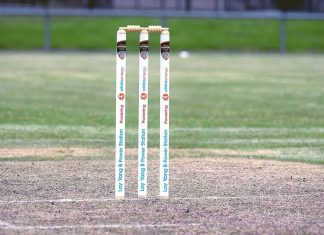DATA showing Latrobe Valley paramedics responded to almost 200 alcohol-related callouts in a recent year has led the State Opposition to warn of increased strain on regional ambulance services.
A Turning Point report revealed callouts related to alcohol, and the abuse of most drugs, were higher in Latrobe during 2011/12 than any other Victorian region other than Geelong, which is home to about 100,000 more residents.
State Parliamentary Secretary for Health Wade Noonan warned those callouts tied up “vital life-saving resources” and accused the State Government of having “no idea how to reduce alcohol abuse in our community”.
“Our hospital emergency departments, police, and hard-working paramedics have been left to deal with this mess,” Mr Noonan said.
“Most disturbingly, the increase in alcohol- and drug-related ambulances attendances are leading to some serious incidents involving our respected paramedics, including assaults and threats of violence.”
State Member for Morwell Russell Northe hit back at claims his government was inactive on the issue, pointing to a ‘whole-of-government’ strategy it released in January aimed at reducing alcohol and drug abuse in the community.
“The plan includes initiatives to promote healthier attitudes to excessive drinking and drunk behaviour, as well as measures to effectively regulate alcohol supply with strengthened reforms to liquor licensing laws,” Mr Northe said.
He said the government was also improving alcohol and drug treatment services and had recently called for submissions from service providers wanting to work in the reformed system.
Mr Noonan maintained the “dramatic increase in alcohol related attendances across regional Victoria” was placing “even greater strain” on Victoria’s ambulance service, saying one in four ambulances statewide were “already failing to respond to life-threatening emergencies within the government’s own 15 minute target”.
Those claims were backed by long-time Moe paramedic Tony Davis who told The Express alcohol-related jobs were “putting us under pressure and taking ambulances away from the sick and injured”.
Mr Davis said incidents were generally higher from Thursday through to Saturday nights but “we are getting more and more through the week now… and they can become abusive and threatening to us and hospital staff”.
Mr Davis said incidents were increasing in number – a claim backed by data – and “it makes for a volatile situation”.
He said there had been occasions when there were insufficient ambulance resources to meet demand and “police have had to drive patients to hospital”.
Mr Northe said Ambulance Victoria had put 3713 more shifts on the road across Gippsland in 2012/13 than it did in 2009/10, an increase of 13.7 per cent.
He said over the last three years the number of paramedics working in Gippsland had increased by 77, while Latrobe Regional Hospital’s emergency department had been allocated an extra $500,000 to help it “better respond to drug and alcohol-affected patients” given the “high volume” of these patients it dealt with.
When the funding was announced earlier this year State Member for Narracan Gary Blackwood recognised drug and alcohol-affected patients presented “serious challenges to emergency departments, in particular those who are under the influence of new and emerging drugs such as ‘ice’, which is associated with an increased risk of violent and complex behaviours”.
“These patients require intensive resources and place considerable pressure on hospitals,” Mr Blackwood said.
Turning Point data showed Latrobe was also second only to Geelong in all amphetamine-related ambulance attendances, including ‘ice’.
Positive signs for hospital
State Health Minister David Davis has congratulated Latrobe Regional Hospital on its “performance in transferring patients from ambulances to the emergency department”.
The minister released new data showing 94.7 per cent of patients were transferred within 40 minutes during 2012-13, above the 90 per cent benchmark.
“These figures show the people of the Latrobe Valley can have confidence in their hospital,” Mr Davis said.
“I congratulate the hospital’s clinicians, staff and management, and paramedics, for this achievement.”
During that time, LRH’s emergency department saw 31,052 patients.
New figures also showed that, during the first six months of 2013, 4430 patients were transported to Latrobe Regional Hospital by ambulance.
lmcrae@lvexpress.com.au










